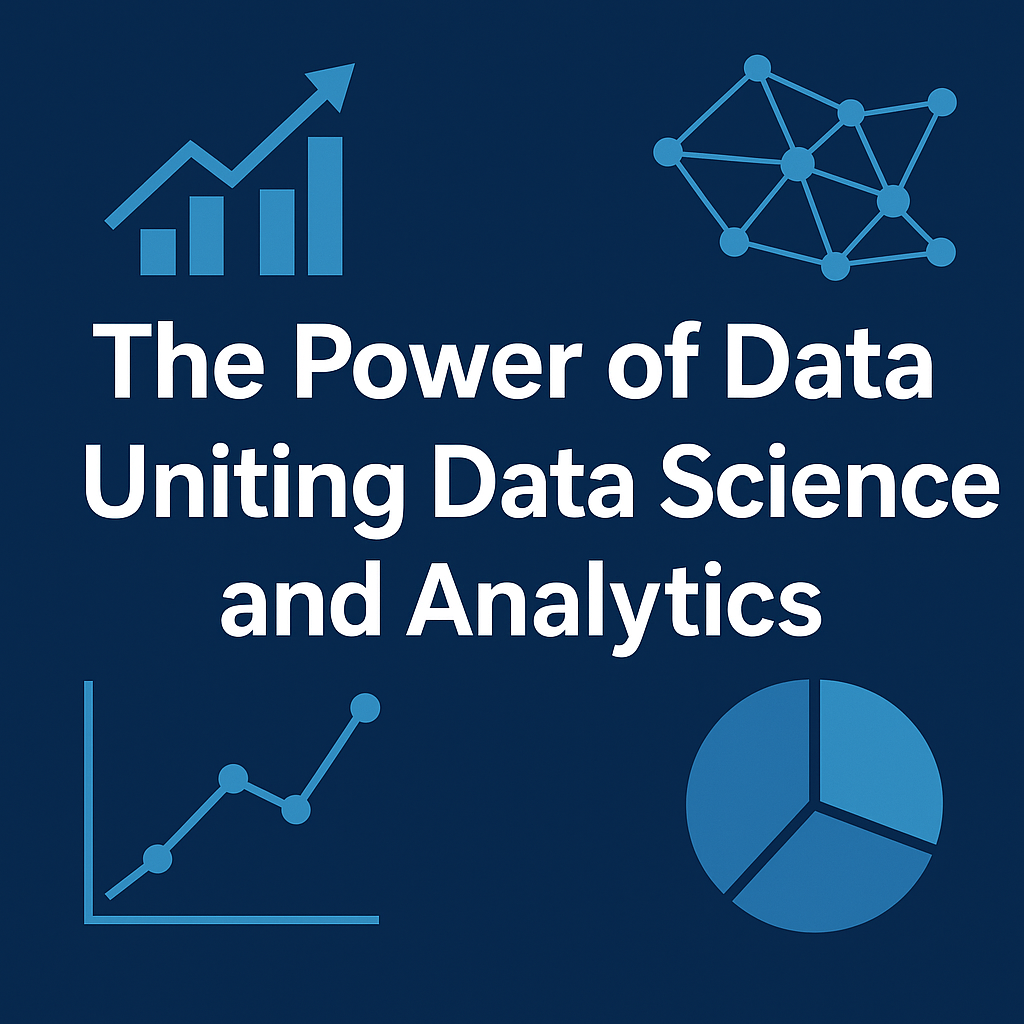
In today’s digital economy, data has become one of the most valuable assets in the world. Every click, transaction, social interaction, and search query generates information that organizations can use to learn, grow, and compete. But while data is everywhere, it doesn’t hold much value on its own. Just like crude oil must be refined to fuel industries, raw data must be collected, processed, and analyzed to create business value.
This is where Data Science and Data Analytics step in. Though they are often confused or used interchangeably, they serve distinct purposes. When united, they create a powerful framework for making smarter, faster, and more strategic decisions.
What is Data Science?
Data Science is a multidisciplinary field that combines mathematics, statistics, programming, and domain expertise to extract meaningful insights from data. Unlike traditional methods, it works with both structured and unstructured datasets, often using machine learning and artificial intelligence (AI) to predict future outcomes.
A data scientist doesn’t just describe what is happening; they develop algorithms and models to answer questions like “What will happen next?” and “How can we influence the outcome?”
Key areas of Data Science include:
-
Predictive modeling – Forecasting sales, demand, or customer behavior.
-
Machine learning – Training algorithms to recognize patterns and improve over time.
-
Big data processing – Handling huge volumes of data from various sources.
-
Artificial intelligence – Building systems that can “think” and make autonomous decisions.
What is Data Analytics?
While Data Science focuses on prediction and innovation, Data Analytics is more about understanding the present and past. It is the practice of examining datasets to uncover trends, identify relationships, and explain outcomes.
Data analytics answers questions like “What happened?” and “Why did it happen?” and is often the first step before applying more advanced data science techniques.
Key functions of Data Analytics include:
-
Descriptive analytics – Summarizing past events, such as monthly sales reports.
-
Diagnostic analytics – Exploring the reasons behind certain results or performance gaps.
-
Visualization – Turning data into charts, dashboards, and interactive reports.
-
Business intelligence (BI) – Supporting day-to-day decision-making with data-driven insights.
Why Uniting Data Science and Data Analytics Matters
Separately, Data Science and Data Analytics are powerful. But when combined, they unlock the full power of data—helping organizations move from hindsight (what happened) and insight (why it happened) to foresight (what is likely to happen next).
Here’s how uniting them creates impact:
-
Smarter Decision-Making
Analytics provides clarity on past and present trends, while Data Science predicts future outcomes. Together, they allow businesses to make proactive rather than reactive decisions. -
Automation and Efficiency
Analytics identifies bottlenecks, while Data Science designs models to automate solutions. For example, automated fraud detection in banking is powered by this combination. -
Personalization at Scale
From Netflix recommendations to Amazon product suggestions, uniting Data Science and Analytics makes it possible to personalize experiences for millions of users in real time. -
Competitive Advantage
Companies that harness both disciplines can better anticipate customer needs, optimize operations, and stay ahead of competitors who rely on traditional approaches.
Real-World Applications
The union of Data Science and Analytics is not just theoretical—it is transforming industries worldwide.
-
Healthcare: Hospitals use predictive models to forecast patient admissions, while analytics helps doctors review past treatments and improve care quality.
-
Finance: Banks rely on data science for fraud detection and credit risk scoring, while analytics supports financial reporting and customer insights.
-
Retail & E-commerce: Analytics tracks sales and inventory, while data science powers recommendation engines that boost customer engagement.
-
Marketing: Data analytics helps segment customers, while machine learning models predict which campaigns will drive conversions.
-
Transportation & Logistics: Companies like Uber and FedEx use data analytics to optimize routes, while data science predicts traffic patterns and demand surges.
The Future of Data-Driven Decision Making
As data volumes grow exponentially, the synergy between Data Science and Analytics will become even more critical. Emerging technologies like cloud computing, AI-driven analytics, and real-time data pipelines are accelerating this shift. Organizations that can harness both will not only keep pace with the digital era but also shape the future of industries.
Instead of simply reacting to events, businesses will anticipate changes, prevent risks, and uncover opportunities hidden in massive datasets.
Final Thoughts
The phrase “knowledge is power” has never been more relevant. Raw data alone is just noise—but when refined through Data Analytics and expanded with Data Science, it transforms into actionable insights that drive growth, innovation, and progress.
By uniting these two disciplines, organizations can build a data-driven culture that thrives in uncertainty and competition. The power of data lies not just in collecting it, but in analyzing it, understanding it, and applying it to shape a smarter, more efficient, and more innovative future.



